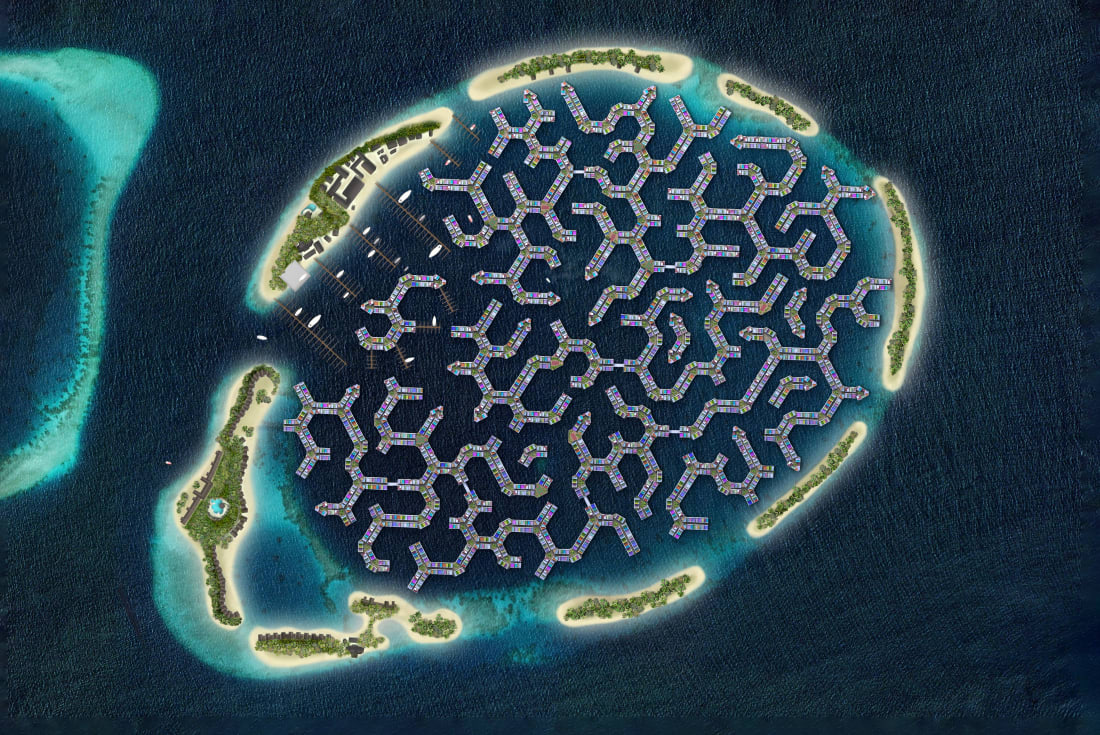
© Waterstudio.NL/Dutch Docklands via BBC News
Pre-reading questions:
I will read each question. Then, please answer them.
- What makes a city great to live in?
- What is your favorite city and why?
Vocabulary:
I will read the words, meanings, and sample sentences. Then, repeat after me.
- canal /kuh-NAL/
- coastal /KOHS-tl/
- perform /per-FAWRM/
- level /LEV-uhl/
- tide /tahyd/
[noun] – a long, thin stretch of water that is artificially made either for boats to travel along or for taking water from one area to another
A canal separates the two towns.
[adjective] – positioned on, or relating to the coast
The hurricane destroyed several coastal cities.
[verb] – to do an action or piece of work
These days, smartphones can perform a variety of tasks.
[noun] – the height of something
Reports say the water level in the dam has risen after the heavy rain.
[noun] – the rise and fall of the sea that happens twice every day
Be careful not to set sail on a high tide.
Article reading:
Please read the whole article. Then, I will check your pronunciation and intonation.
A floating city with a population of 20,000 people is now being built in the Indian Ocean. The city is only ten minutes away by boat from Malé, the capital of the Maldives. It will contain 5,000 floating units, including residences, restaurants, businesses, and schools, with canals running between them, according to the architecture firm Waterstudio. The first units will be revealed later this month, with residents anticipated to begin moving in early 2024 and the city completed by 2027. Waterstudio’s city aims to attract locals with its rainbow-colored apartments, large balconies, and coastal views. Residents will travel through the sandy streets by boat, walking, riding, or driving electric scooters or wagons. The city should be self-sufficient and capable of performing all of the functions of a traditional city.
The Maldives is one of the world’s most vulnerable countries to climate change. Eighty percent of the country’s land area lies below one meter above sea level, and with sea levels forecast to increase by a meter by the end of the century, practically the entire country might be flooded. If a city floats, though, it may rise with the tide. This, according to Waterstudio’s COE Koen Olthuis, represents “fresh hope” for the Maldives’ 500,000 population.
The Maldives is one of the world’s most vulnerable countries to climate change. Eighty percent of the country’s land area lies below one meter above sea level, and with sea levels forecast to increase by a meter by the end of the century, practically the entire country might be flooded. If a city floats, though, it may rise with the tide. This, according to Waterstudio’s COE Koen Olthuis, represents “fresh hope” for the Maldives’ 500,000 population.
Comprehension questions
I will read each question. Then, please answer them based on the article.
- What is the population of the floating city in the Maldives?
- What will the floating city contain?
- According to the article, what is the aim of Waterstudio’s city?
- How can the residents travel through the sandy streets of the floating city?
- What percentage of the Maldives’ land area lies below one meter above sea level?
Discussion questions
I will read each question. Then, please answer them.
- What is your favorite spot in your neighborhood? Why do you like it?
- Which places do you visit first while visiting a new city?
- If you were to visit the floating city of the Maldives, what would you do there?
- Is it wise to construct floating cities on a land mass at the risk of drowning?
- What major differences would there be between a floating city and a normal one?